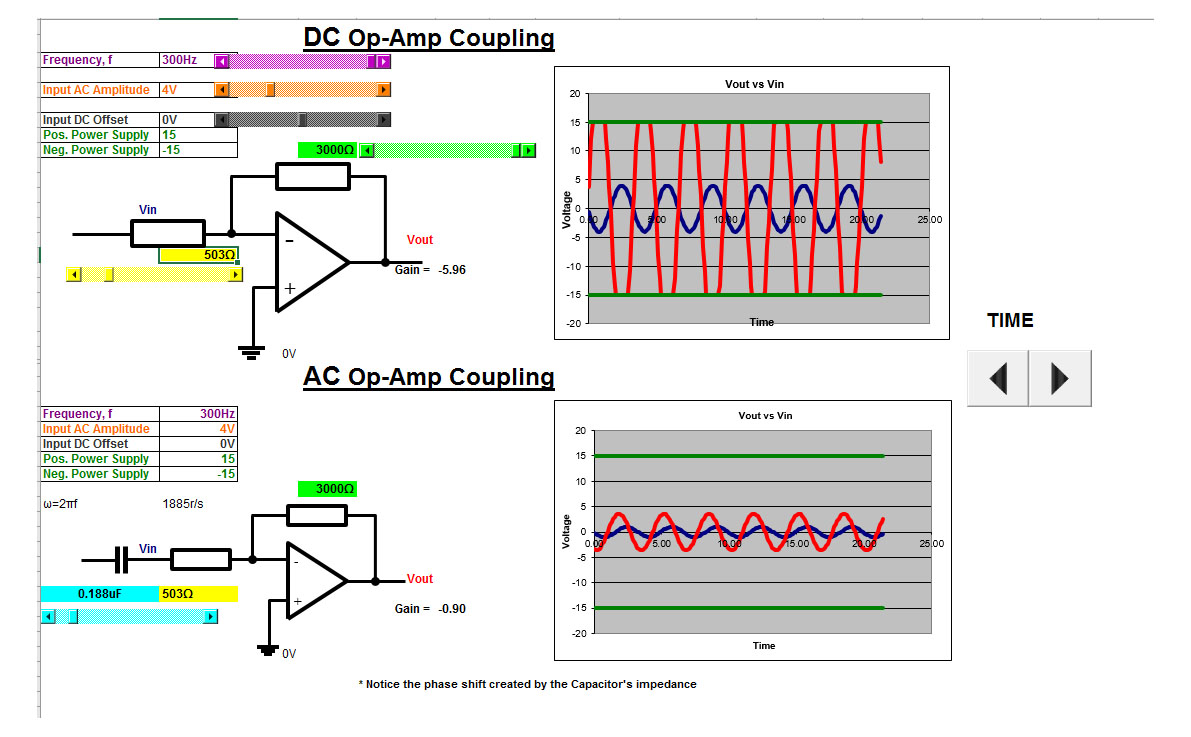AC Coupling: AC coupling consists of using a capacitor to filter out the DC signal component from a signal with both AC and DC components. The capacitor must be in series with the signal. AC coupling is useful because the DC component of a signal acts as a voltage offset, and removing it from the signal can increase the resolution of signal measurements. AC coupling is also known as capacitive coupling.
DC Coupling: DC coupling allows both AC and DC signals to pass through a connection. When using DC coupling, no additional capacitor is added to filter the signal. The DC-coupled configuration is usually best if the signal source has only small amounts of offset voltage, less than ±100 mV, or if the DC content of the acquired signal is important.

Download Excel Simulator
DC Coupling: DC coupling allows both AC and DC signals to pass through a connection. When using DC coupling, no additional capacitor is added to filter the signal. The DC-coupled configuration is usually best if the signal source has only small amounts of offset voltage, less than ±100 mV, or if the DC content of the acquired signal is important.

Download Excel Simulator
Comments
Post a Comment